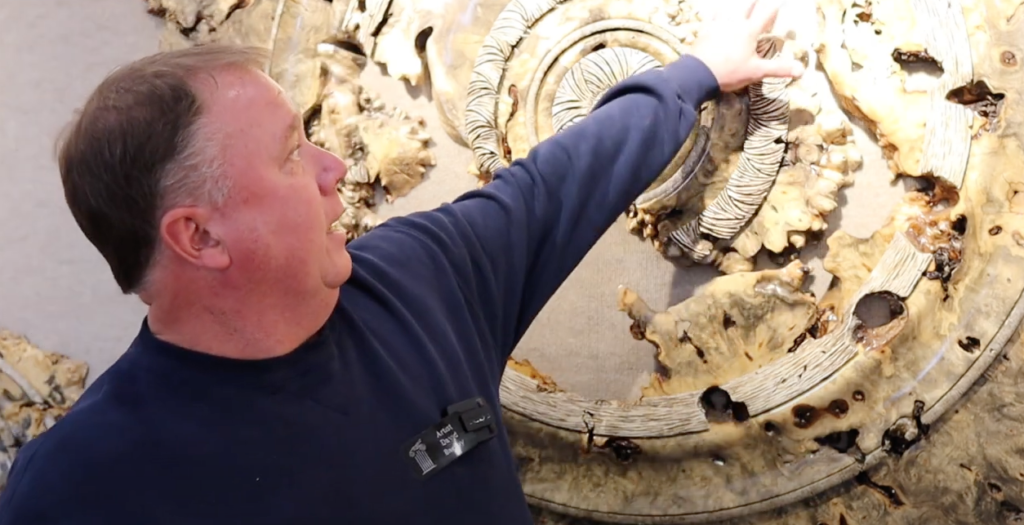
Artist David Barkby was first introduced to the world of woodworking in his teenage years during a job at a cabinet shop. Fast forward 40 years, and while he’s still creating structural, wooden wall pieces, these rely on his creative eye rather than on a blueprint.
The years spent in the cabinetry-making arena gave David an expert knowledge of the trade but it was when he began experimenting with woodturning, that he found his calling in art––and that has given him creative freedom and pure joy.
When considering how to create art using wood, David knew it had to be unlike anything else fellow woodworkers were making. So instead of applying his craftsmanship to create bowls and vessels, he figured out a way to create large wall pieces. In his work, David has pushed the limits of his material and adds more complexity and dimension as he uncovers new techniques.
Read on (or watch the video below) for more of David’s journey from woodworker to artist.
When did you know art was your calling?
I’ve been making a living out of woodworking for 40 years now. I started with kitchen cabinets when I was 17 in a kitchen cabinet shop. Then I moved over to a casket shop and then I opened up my own cabinet shop. I was making functional work but in the mid-90s, I got into the art end and started doing my wall pieces somewhere around 1997 or 1998.
What do you love most about creating art?
The freedom. Instead of looking at a set of blueprints and building it, I am free to create and have fun with it. When I’m out doing my wood buying, I actually never know what I’ll get because I’m buying the whole burls. I have an idea of what’s going to be inside, but it’s not until I start slabbing it out and working on it that I get to see what’s in there. It’s kind of like a hidden gem. You don’t know where you’re at until the piece is done.
What challenges you the most about your work?
Pushing the limits of how big I can go. When making pieces with a lot of openings, they’re not really strong structurally, so it’s pushing the boundaries of what’s able to be done.
How has your work evolved?
I started in my cabinet shop when I’d occasionally make spindles and balusters for stairs. Then I started playing with bowls and vessels. Before I started selling my turned work, I wanted something that would really separate me apart from the other turners. Every woodturner is doing bowls and vessels. Very few people are doing anything like wall pieces.
I like my work to look like it was well preserved but dug up out of an archeological find so there’s an ancient feel to it. My work has always had that but it’s just gotten bigger and more complex over the years.
What drew you to the Celebration of Fine Art?
Getting to know everybody here. We all have a blast. We toss ideas back and forth. It’s just a great place to hang out.

